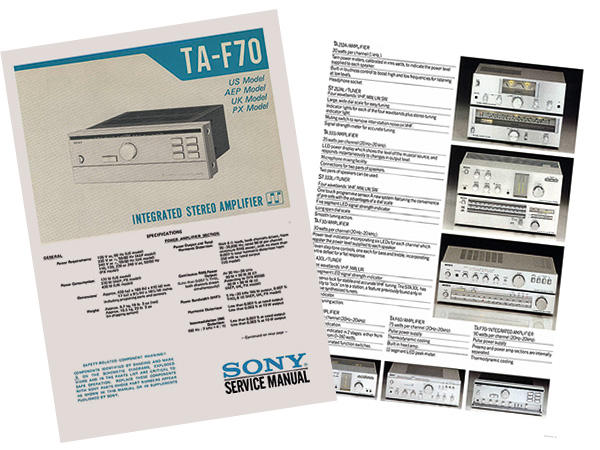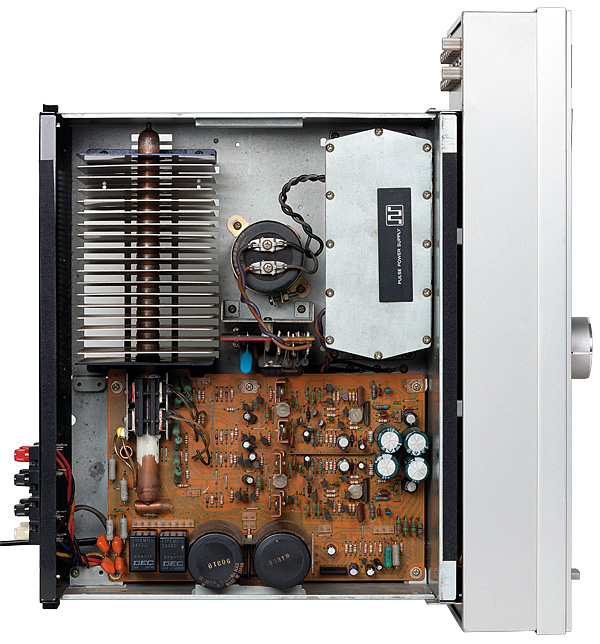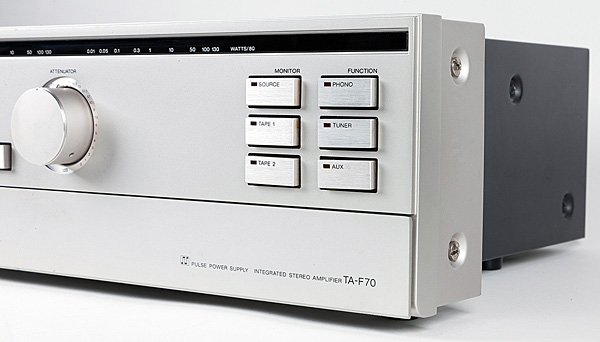Sony TA-F70 amplifier Page 2
![]() David Listens
David Listens
It's true to say that much Japanese hi-fi from this period was 'all show and no go'.Many separates offered lavish styling and feature counts allied to a general air of quality that was not borne out by listening tests. That, however, is not true of all of it – even if equipment from the Land of the Rising Yen was voiced a little differently to what many western ears were used to hearing. Try an entry-level Meridian pre/power from that era, such as the 101/103, or the aforementioned A&R A60 or any such British product in-between, and you would hear a pretty soft sound that certainly never seemed bright when driving any commercial speaker of that period.
The TA-F70 is an interesting contrast, because it doesn't sugar the musical pill, so to speak. That's not to say, however, that it's a quintessentially thin and wiry performer. There isn't the chrome-plated upper midband and hard treble of many of its compatriots. Rather, the amp treads a clever line between a soft and warm British sound and the typically forward, bright Japanese one. The result is something that stands up well today, even driving revealing loudspeakers.

Cue up Age Of Plastic, the 1980 debut album from The Buggles [Island Records ILPS 9585], and 'Living In The Plastic Age' sounds surprisingly large and spacious. This amplifier leaves you in no doubt that it has plentiful power on tap, and can drive any loudspeaker to high volumes with consummate confidence. It has the air of a car with an particularly large engine for its size: it's very relaxed and never breaks into a sweat, yet can really pick up its skirts and run if called upon so to do!
The Buggles track is dominated by Trevor Horn's bass playing and this remains tuneful and well articulated all the way through the song, never losing focus even on dynamic crescendos. The Sony TA-F70 almost feels like it's toying with loudspeakers, even at high levels.
At the same time this amp lets you push it really loud without punishing you. There's a natural ease here that invites you to twist that large 'attenuator' knob clockwise. Unlike that of so many rivals of its day – even the highly capable Hitachi MOSFET designs – the presentation doesn't harden up as the going gets louder. Rather, the soundstage grows in size and pulls you in. This is down to the amp's fairly transparent nature. It's not invisible and does have its own tonal patina, but it's pretty agreeable – unlike so many of its contemporaries.

Tight And Gutsy
Cue up Rush's slightly mid-forward 'The Camera Eye' from the album Moving Pictures [Mercury 6337 160] and there's an ever so slight 'glint' to the upper midband, but this really is subtle compared to some hard-as-nails rivals. The bass, on the other hand, has a certain crispness that feels just a little too processed to sound completely natural. It's taut, tight and gutsy, yet the TA-F70 makes low notes seem just a tad too tidy for some tastes. That's not to say the sheer power of its bass isn't very much appreciated, however, as it goes very loud very cleanly indeed.
Feed the TA-F70 some less beat-driven music and some might think the sound not quite as convincing. Kate Bush's 'This Woman's Work' from The Sensual World [EMI EMD 1010] is a beautiful ballad that's pretty effective at raising the hairs on the back of your neck. The Sony serves up lots of fine detail and an expansive soundstage – it sounds so much wider and more three-dimensional than many amplifiers of its time – yet you can't help thinking it's a bit of an overly ordered sound.
This is especially obvious if you've just heard the same song on a good tube amp, which will invariably better capture the song's tender, emotional pull. The Sony TA-F70, on the other hand, tends to be rather more matter-of-fact, focusing in on the recording and its technicalities rather than the heartrending lyrics. This isn't to criticise this excellent integrated amplifier, so much as signpost its character traits.
The amp was discontinued in 1982. Few sold in the UK, although it is more plentiful in Germany, USA and Japan. In one sense it was the end of an era for the Japanese giant. Because the Yen got substantially stronger during the TA-F70's lifespan its replacement had to be less well made to sell into the same market.

One could see that the accountants had moved in on the design team. Just a year or two later, it was obvious that the big Japanese manufacturers were really beginning to cost-cut their products, making the older TA-F70 seemed conspicuously over-engineered compared to its immediate successor. There is nothing bad about this amplifier – everything from the phono stage to the tone controls work well, and it proves a fine listening companion.
Buying Secondhand
The main problem with the Sony TA-F70 as a classic hi-fi buy is finding one – Germany is a good place to look. Expect to pay £400 or more for a really good example, and that is still a lot of amplifier for the money.
The TA-F70 has proven itself to be reasonably reliable over the years although the Pulse Power Supply can fail in overly used and/or abused versions, so get a proper demonstration if you can. While this isn't quite Japanese esoterica, it's a great aperitif – buy wisely and you'll surely come back for more!
Hi-Fi News Verdict
There is some truth to the claim that many Japanese amplifiers of the '70s and '80s are hard and/or bland sounding, but it is by no means true for all such products, as this test reveals. The Sony TA-F70 shows the quality that was possible, the amp measuring up to today's standards in very many ways. Daringly designed, technologically innovative and superbly screwed together, what's not to like?


















































